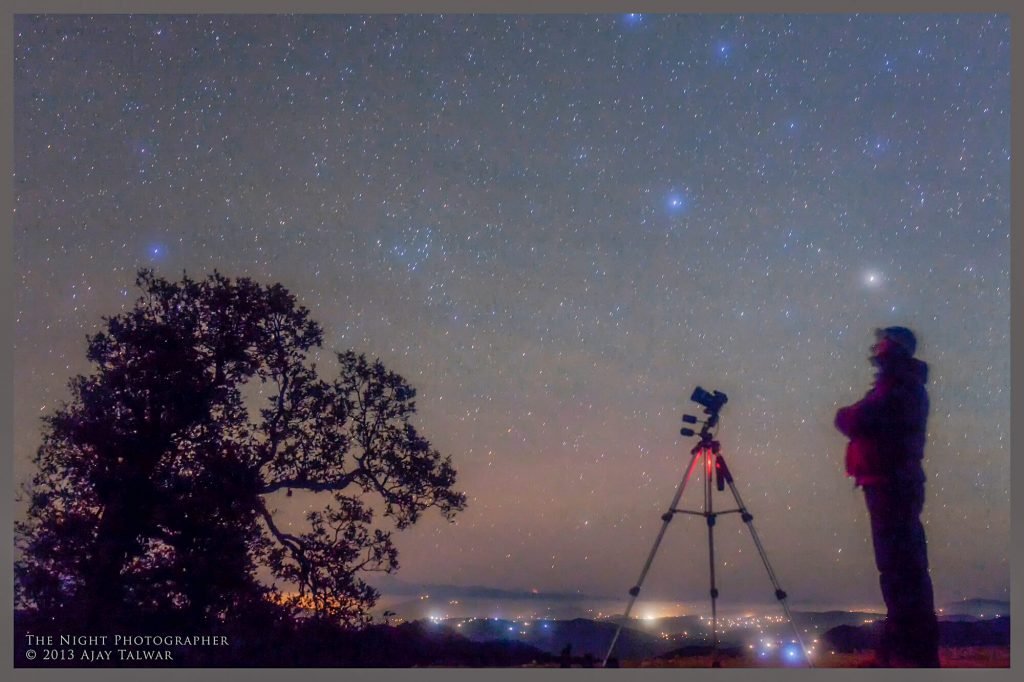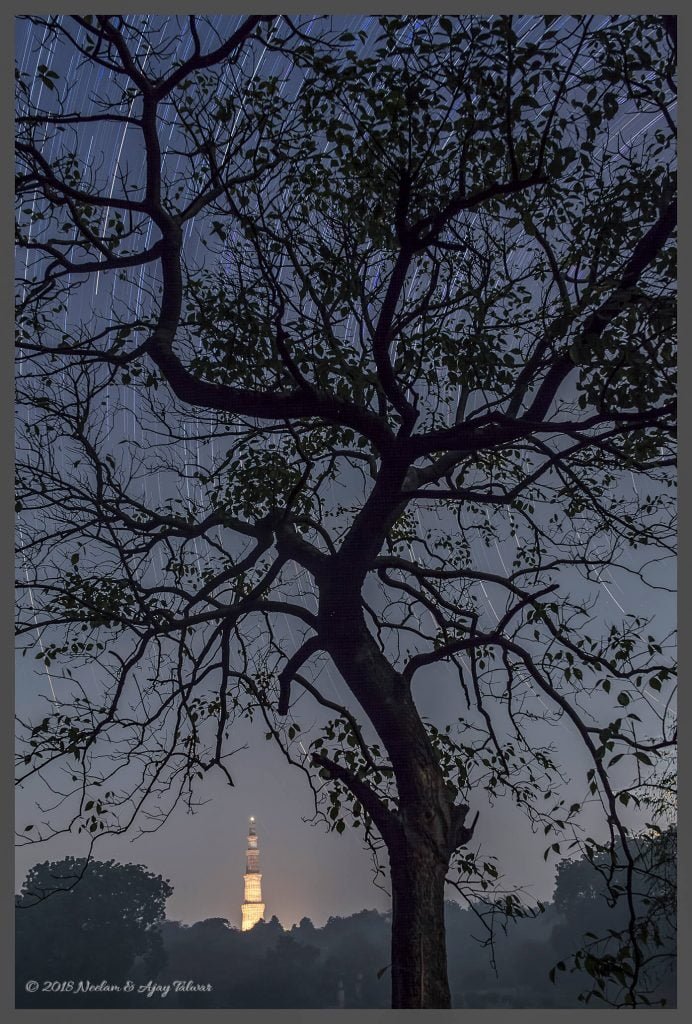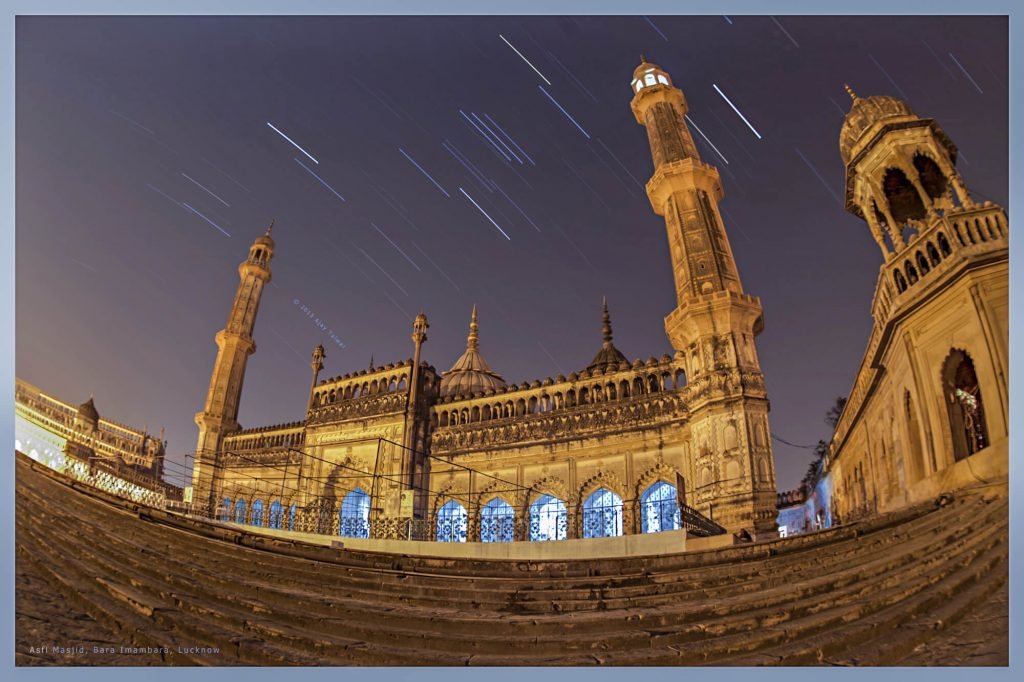
Method of Star Trail Photography
Star trails are mesmerising. It is as if the spirals made of bright stars are trapping people’s eyes. You’re showing something remarkable to the world. Something that’s happening out there, in the universe, but no one can see with the naked eye:
In your endeavour to shoot star trails, you are on a beautiful location, stars are shining and the landscape is unique, the site is secluded, no one around to disturb you with torches and lights.Here’s how you start off your star trails.
Checklist
Protect your memory card; back up your images as soon as possible.

The main process of Star Trail photography consists of four parts:
Step 1 – Focusing is important and needs to be done slowly and accurately. You may like to connect the camera to your laptop or a tab to get a bigger picture, so as to focus sharply. You could also carry a magnifying glass to check accurate focus. Start live view and point to a bright star to focus. Once the camera is focused, you can change the direction of the camera to frame.
Step 2 – Framing the sky is one part, but getting some interesting part of the Earth is the artistic touch that the photographer provides. Take care not to have direct bright lights in the frame as well as halos from the light just outside the frame. The tripod & camera setup must not move at all during the entire sequence. You could tie the tripod down to some rigid structure.
Step3 – Test exposure is clicking an image and checking its histogram to see if the exposure is right. You do not want to keep the ISO at its maximum, you will certainly get more stars, but they all will be saturated, lose their natural colours and become white. You could try an ISO of 200 or 400. The length of the exposure will determine the length of the star trail on the sensor, longer the exposure, longer the star trail. But you need not increase the exposure just to get a very long star trail, there is a trick with digital cameras.
Once you have decided the optimum exposure, then you need to shoot the same exposure over and over, with a minimum gap in between exposures. Later these individual shots would be blended together for the final star trail image.
Step 4 – Exposure Sequence is the main process of star trail photography. Program the intervalometer carefully. Sometimes astrophotographers shoot a star trail sequence for the entire night! In such case you need to ascertain if the storage card and battery would last for the entire duration of the sequence. You can either use multiple batteries in a grip, or use an AC adapter.
For the images, you could connect a laptop so that all images are downloaded to the computer and there is no limitation of the storage card.

Avoiding common mistakes while shooting star trails:

Shooting star trails from the city:
Normally an astrophotographer would not think of shooting star trails inside a city claiming it to be too bright and that stars not visible, but it is very much possible. Here you can see two examples of star trail shot from middle of New Delhi & Lucknow.
Shooting star trails from the city would certainly be a challenging situation. Although you will never be able to photograph the number of stars you catch from dark location, nevertheless shooting star trails would be nice from the confines of a bright city. Keep the following points in mind while shooting star trails from the city:
Focusing is very important for shooting star trails in the city. If the focus is slightly off even by a millimetre, light from fainter stars will spread out, and consequently these fainter stars will get lost in the bright city background.


